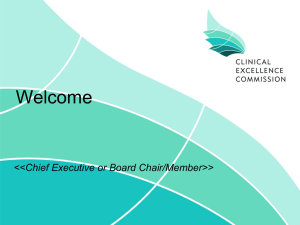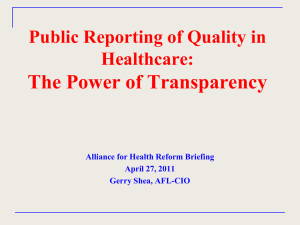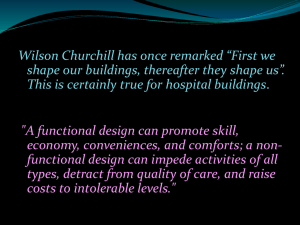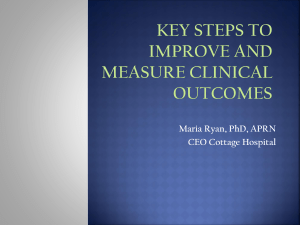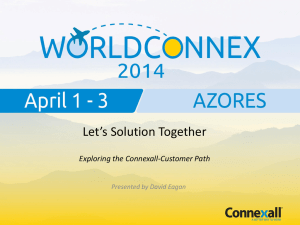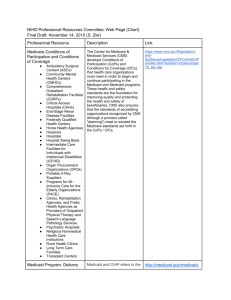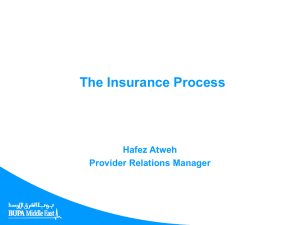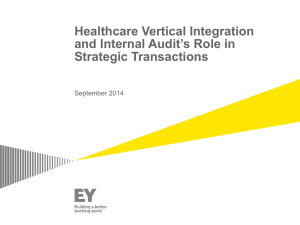KleenSlate NPP Overview
advertisement
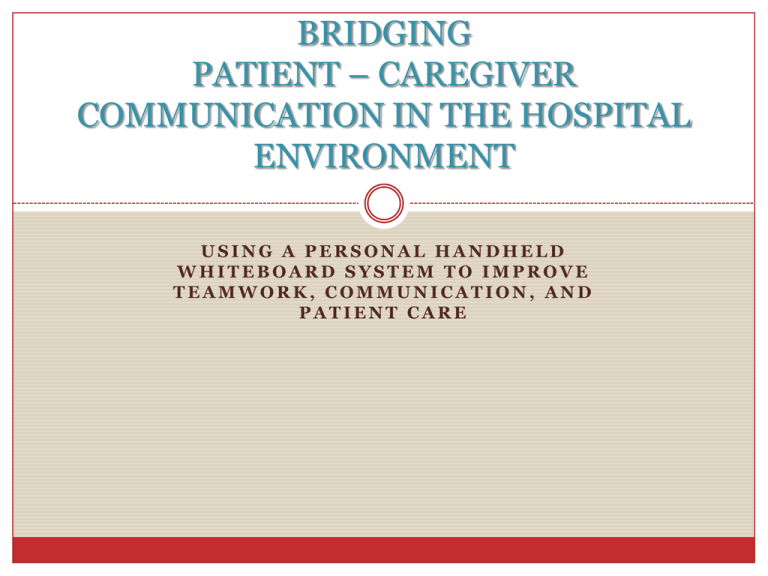
BRIDGING PATIENT – CAREGIVER COMMUNICATION IN THE HOSPITAL ENVIRONMENT USING A PERSONAL HANDHELD WHITEBOARD SYSTEM TO IMPROVE TEAMWORK, COMMUNICATION, AND PATIENT CARE PRESENTATION OBJECTIVES THE PROBLEM: PATIENT – CAREGIVER COMMUNICATION IN PERSPECTIVE THE COMMUNICATION PRIORITY COMMUNICATION RISK FACTORS TO BE ADDRESSED EDUCATION AND HEALTHCARE INDUSTIRES MEET CHALLENGES TO OVERCOME IMPLEMENTING PROVEN TOOLS AND STRATEGIES HOSPITALS IN THE U.S. Total Number of All U.S. Registered Hospitals ** 5,724 Number of U.S. Community Hospitals** 4,973 Number of Federal Government Hospitals 208 Total Staffed Beds in All U.S. Registered* Hospitals 924,333 Staffed Beds in Community Hospitals 797,403 Total Admissions in All U.S. Registered* Hospitals 36,564,866 Admissions in Community Hospitals 34,843,085 *Registered hospitals are those that meet AHA’s criteria for registration as a hospital facility. ** Community Hospitals are defined as all nonfederal, short-term general and other special hospitals. THE SIGNIFICANCE OF COMMUNICATION IN THE HOSPITAL SETTING Joint commission on Accreditation of Healthcare Organizations PATIENT VULNERABILITY Patients often enter hospital in a “communication vulnerable” state or become so by virtue of condition or treatment. Patients regularly report instances in which communication barriers result in feeling of anxiety, fear, frustration, unrecognized pain, and overall loss of control. When patient family or advocates are not present, patients are often left without the tools to communicate resulting in disorientation and distress. Patients with access to communication receive less sedation, are transitioned faster, have less pain, have increased satisfaction with their care, feel more in control and generally do better. COMMUNICATION PRIORITY Education and Healthcare Related Technology-Related Assistance for Individuals with Disabilities Act of 1988, P.L. 100-407 Individuals with Disabilities Education Act (IDEA), P.L. 105-17 Joint Commission on Accreditation in Healthcare Organizations (JACHO) 1997 – 2002 Study JACHO Standard of Care RI.2.100 – “The patient has a right and need for effective communication” JACHO National Patient Safety Goals (2007 NPSG – Goal 13) patients have active involvement in their own care requiring overcoming communication barriers. The Affordable Healthcare Act (PPACA) The Affordable Healthcare Act PPACA The Centers for Medicare & Medicaid Services (CMS) will begin the Readmissions Reduction Program, which requires CMS to reduce payments to IPPS hospitals with excess readmissions, effective for discharges beginning on October 1, 2012. The regulations that implement this provision are in subpart I of 42 CFR part 412 (§412.150 through §412.154) Starting in October, an estimated total of 2,217 hospitals across the nation will be penalized. Together, these 2,217 hospitals will forfeit more than $280 million in Medicare funds over the next year, i.e., until October 2013, as Medicare and Medicaid begin a wide-ranging push to start paying health care providers based on the quality of care they provide. Enhancing communication using Patient Whiteboards can reduce readmissions thereby assuring greater hospital compliance with PPACA. Communication Risk Factors Effective communication depends on clarity which is influenced by: Culture/Ethnicity Socioeconomics Literacy Gender Personality/Behavior of Patient Personality/Behavior of Caregiver Trauma induced impediment Overcoming Barriers Education Industry and Healthcare Industry share many of the same Communication Issues. Augmentative and Alternative Communication (AAC) otherwise known as communication tools. Two categories of ACC Unaided AAC – requires no tools but includes “signing” Aided ACC – any device, electronic or non-electronic used to transmit or receive messages. Low-Tech – Communication aids that do not need batteries, electricity or electronics. Typically hand-held communication boards or books depending on physical limitation of users. High-Tech – Speech generating devices that permit the storage and retrieval of electronic messages or voice output communication aids. Education Industry Adoption The Education Industry has demonstrated positive experience for students with and without disabilities. Education is focusing on Low-Tech for the following reasons: Low Capital Costs – Capital costs are typically orders of magnitude higher for High-Tech Tools. Low Maintenance Cost – Low-Tech requires no hardware and software maintenance and very low expenditures for replacement of damaged tools. Low Learning Curve – Most Low-Tech Tools require little to no user instruction and can be implemented immediately. Assessment of Skills – Low-Tech enables rapid assessment of key cognitive and motor skills. Opportunity For Healthcare Communication access in healthcare setting must be functional, user-friendly, accessible and easy to acquire as required in the education industry. Patient access to tools is critical and can be defined through assessment and needs analysis of patient, patient family, and caregiver. Tools must be easily and effectively transferrable to patient home, yet be compatible with hospital systems. Tools must be low cost. NATIONAL PRIORITY PARTNERSHIP “THE COMMUNICATION PRIORITY” Patient & Family Engagement Convening Meeting May 2010 Purpose of Meeting: “to identify actions to drive the achievement of patient experience of care goal of the patient and family engagement priority”* “NPP selected patient and family engagement as one of the six priority areas, along with three specific goals: increasing the use of patient experience of care measures, improving patient self-management skills, and increasing the use of shared decision-making tools.”* * Patient & Family Engagement Convening Meeting Synthesis Report May 2010 Barriers to Adoption Lack of Administrative Support New Requirements for Medicare and other reimbursement Define as a facility wide initiative Lack of Staff Support Define as a facility wide rather than department initiative Lack of Easy Access within the Healthcare Facility Establish procedures Lack of Financial Support – Patients may not have resources to pay for even a $10 item. Grant Funding Availability 3rd Party Advertising Funds Available Incentives to Insurers – Reducing Errors, Reducing Readmissions Incentives to Hospitals – Reducing Errors, Reducing Readmission, enhanced patient perspective of care provided. Patient Whiteboards as a Communication Tool UCSF 2010 study* Education Industry has a proven Whiteboard system and Healthcare has demonstrated similar experience. Personal Patient Whiteboards can serve as a communication tool between hospital providers and as a mechanism to engage patients. Nurses placed greatest value on “Goal for the Day” and “Anticipated Discharge Date”. Limited availability of whiteboard markers was considered to be the greatest barrier to use. Despite differences in practice patterns between nurses and physicians all providers valued use to improve teamwork, communication and patient care. * Journal of Hospital Medicine Volume 5, No 4, April 2010

